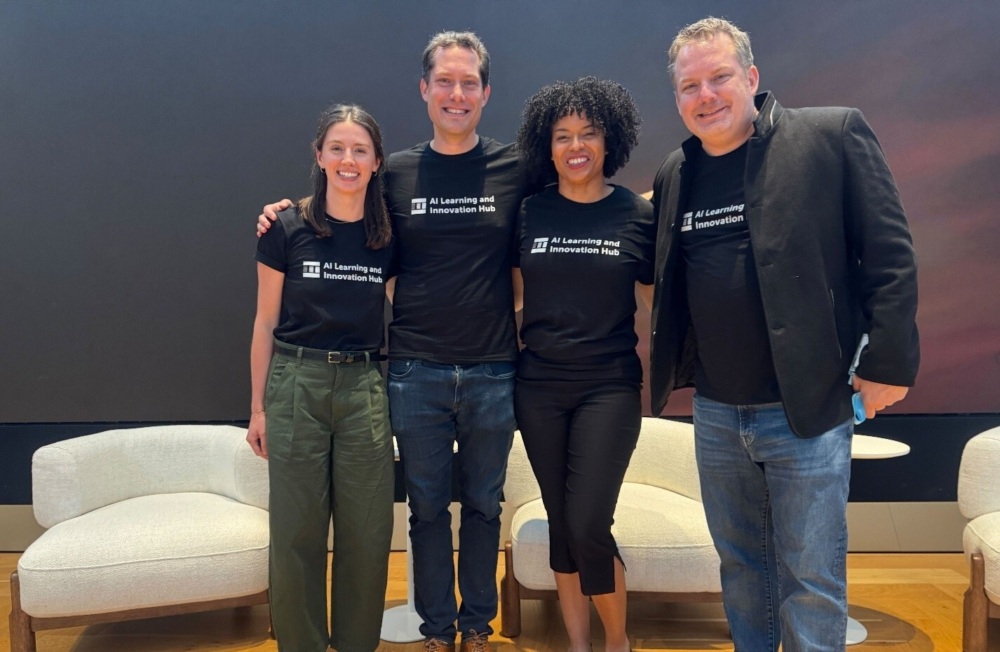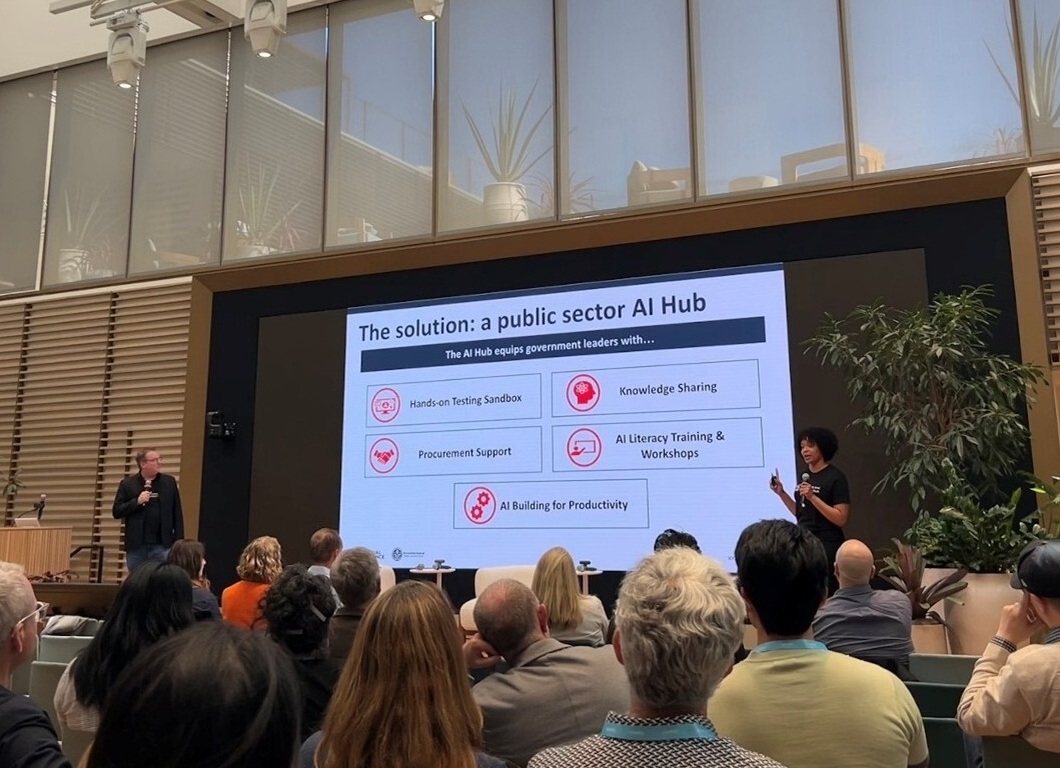

Public Sector Solutions
With artificial intelligence rapidly evolving, public agencies are expected to keep pace. Yet, many lack the bandwidth, technical support, or low-risk environments to explore its potential. We’ve seen this firsthand, and Code for America’s recent research shows that just three states are at an advanced stage of AI readiness. That’s where our AI Learning and Innovation Hub, or AI Hub, comes in. Launched by Social Finance and HumanServices.ai in spring 2025, the AI Hub offers public sector teams a structured, low-risk environment to experiment with AI tools, build confidence, and test ideas before making long-term commitments.
On Monday, our AI Hub team traveled to San Francisco for an in-person Demo Day hosted by the GitLab Foundation and OpenAI. The event brought together nonprofits, innovators, and funders exploring how artificial intelligence can help address some of today’s toughest economic challenges. 
It was energizing to hear from other organizations testing bold ideas, share what we’ve been learning through our AI Hub, and connect with people equally committed to ensuring AI’s benefits reach the communities who need them most.
Here are a few takeaways that stood out:
1. Sometimes the most powerful solutions come from nontechnical people.
As Jared Chung of CareerVillage told the group, AI innovation is not only for coders or IT teams. People working closest to the problems, whether as case managers, program administrators, or compliance officers, often see the clearest path to a meaningful solution. In the AI Hub, we are centering these practitioners by giving them the tools, training, and space to test ideas so their deep understanding of community needs shapes the design of AI solutions.
2. Harnessing “show, don’t tell” for greater impact.
We heard from Alex Nawar and others about the value of openness in the nonprofit and public sectors compared to the private sector, and this is core to what we do in the AI Hub. By sharing vetted prompts, blueprint solutions, and lessons learned, even when the work is still in progress, we can accelerate adoption and create space for others to build on what is working.
3. Build roads, not cars.
Matt Zieger gave us the helpful framework of building roads, not cars. The most lasting change often comes from building systems and pathways that many people can use, rather than creating a single product for a single purpose. At the AI Hub, we are focused on building the infrastructure—training, peer learning, and experimentation space—that enables government agencies to develop their own AI-powered solutions for the problems they know best.
4. Funding learning and capacity is essential for lasting impact.
Rose Afriyie challenged the group to be as prolific in sharing shortfalls as we are in sharing successes. Measuring outcomes is vital but learning and capacity building are often what make those outcomes possible. Without support for these elements, promising AI solutions may stall or fail to scale. Through the AI Hub, we help agencies not only deliver results but also build the skills and infrastructure needed for ongoing innovation and exploration.
As we continue working with our first AI Hub cohort, we look forward to seeing their ideas take shape and sharing those insights widely. If your organization is exploring AI for economic mobility or social impact, we would love to connect. Subscribe to our AI Hub newsletter to stay up to date on what we’re building and learning. By working together, we can help the public sector responsibly harness AI to create lasting impact.
Related Insight

Reaching One Million Active Apprentices Starts with Retention—And Investments in the Right Supports
Improving apprentice retention and completion is critical to achieve the Trump administration’s goal of one million active apprentices. This requires a deep understanding of the factors driving apprentice cancellations as well as targeted investments in…